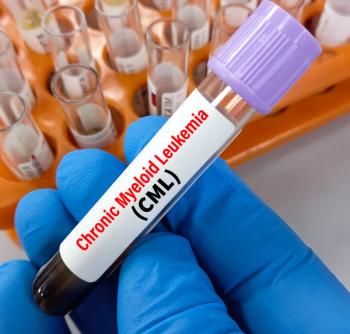
- January 2021
- Volume 89
- Issue 1
Cough, Cold, and Flu Symptom Relief For Those with High Blood Pressure
This article was sponsored by Bayer and produced by Pharmacy Times® with Bayer.
With the onset of cold and flu season, pharmacists have an opportunity to support the management of symptoms. Given the wide variety of active ingredients available to treat cold, cough, and flu symptoms—and the even wider variety of OTC products that feature combinations of these ingredients—it may be a daunting task for some consumers when they navigate the product selection in the pharmacy. However, pharmacists are in a position to help.
If a pharmacist is asked for a recommendation or guidance when a consumer is selecting an OTC cough and cold product, there are a number of factors to consider, including identifying their most bothersome symptom, product preference, and the presence of any comorbid medical conditions. A common medical condition shared by many Americans is hypertension, which is defined as blood pressure at or above 130/80 mm Hg according to the 2017 American College of Cardiology and American Heart Association (ACC/AHA) hypertension management guidelines.1 Hypertension affects an estimated 108 million adults in the United States (or 45% of the adult population).2
Due to the high prevalence of hypertension, it is important for pharmacists to increase the awareness of ingredients in cold and flu OTC medications that can raise blood pressure or interfere with the effectiveness of prescription antihypertensive agents.1 Pharmacists are well positioned to provide information to those with high blood pressure who seek out recommendations on options available to them.
Considerations of High Blood Pressure in the Selection Of an OTC Medication
According to the AHA, those with high blood pressure should avoid products that include systemic nasal decongestants and nonsteroidal anti-inflammatory drugs (eg, ibuprofen and naproxen) as these agents can increase blood pressure.1,3
Several cold and flu OTC products contain pseudoephedrine or phenylephrine decongestants that stimulate α-adrenergic receptors on vascular smooth muscle, causing vasoconstriction of the blood vessels within the nose and providing temporary relief of nasal edema. However, the vasoconstriction is nonspecific systemically and may cause elevated blood pressure.3
Coricidin® HBP
Coricidin® HBP products are specially formulated to provide safe and effective symptom relief for those with high blood pressure.4 The
These products contain combinations of several active ingredients to provide temporary relief from cold, cough, and flu symptoms. All products are free of α-adrenergic agonist systemic decongestants and therefore will not increase blood pressure. Depending on the specific product, ingredients may include acetaminophen (pain reliever and fever reducer), dextromethorphan hydrobromide (cough suppressant), guaifenesin (expectorant), chlorpheniramine maleate (antihistamine), and doxylamine succinate (antihistamine).4
The Coricidin® HBP Maximum Strength product line was launched in 2020 and contains higher doses of active ingredients to maximize effective symptom relief while remaining safe for use in patients with high blood pressure. Two products are available in liquid-filled gels, which provide an option for those with difficulty swallowing, an important consideration for older populations. Of 208 adult patients who participated in a study that assessed the swallowability of Coricidin® HBP Maximum Strength liquid filled gels, 75% indicated that they were “easy” or “very easy” to swallow.5
Role of the Pharmacist
Pharmacists are readily accessible in community settings and, as such, can be a helpful resource for consumers who are selecting OTC cough, cold, and flu products. They can also help address any potential misconceptions regarding product effectiveness. For example, those with high blood pressure may believe they are limited regarding options that are safe and more likely to be restricted to ones that may not be as effective. Pharmacists have an opportunity to recommend Coricidin® HBP based on the labeled indications (table) without increasing blood pressure.
By supporting consumers with additional education regarding OTC cough, cold, and flu products, pharmacists can help those with hypertension achieve safe and effective relief of their symptoms without negatively affecting their blood pressure.
References
1. Whelton PK, Carey RM, Aronow WS, et al. 2017 ACC/AHA/AAPA/ABC/ACPM/AGS/APhA/ASH/ASPC/NMA/PCNA Guideline for the Prevention, Detection, Evaluation, and Management of High Blood Pressure in Adults: A Report of the American College of Cardiology/American Heart Association Task Force on Clinical Practice Guidelines. Hypertension. 2018;71(6):e13-e115. doi:10.1161/ HYP.0000000000000065
2. Estimated hypertension prevalence, treatment, and control among U.S. adults. Million Hearts. Updated February 5, 2020. Accessed October 6, 2020. https://millionhearts.hhs.gov/data-reports/hypertension-prevalence.html
3. Understanding over-the-counter (OTC) medications and high blood pressure. American Heart Association. Updated November 30, 2017. Accessed September 23, 2020. heart.org/en/health-topics/high-blood-pressure/changes-you-can-make-tomanage-high-blood-pressure/understanding-overthecounter-otc-medications-andhigh-blood-pressure
4. Coricidin HBP. Bayer. 2019. Accessed October 7, 2020. https://www.coricidinhbp.com/
5. Swallowability Study Results: Coricidin. Data on File.
Articles in this issue
over 4 years ago
Let’s Take Care of Ourselves This Seasonover 4 years ago
Spot Heart Failure a Mile Awayover 4 years ago
Legislation Aims to Protect Children With Severe Allergiesover 4 years ago
Managing Inventory Well Is a Critical Functionover 4 years ago
OTC Cases: Influenzaover 4 years ago
Pharmacists Play an Essential Role in Managing Hypertensionover 4 years ago
Interactives: Case Studies (January 2021)over 4 years ago
Chronic Conditions Affect Brain FunctionNewsletter
Stay informed on drug updates, treatment guidelines, and pharmacy practice trends—subscribe to Pharmacy Times for weekly clinical insights.























































































































































































































